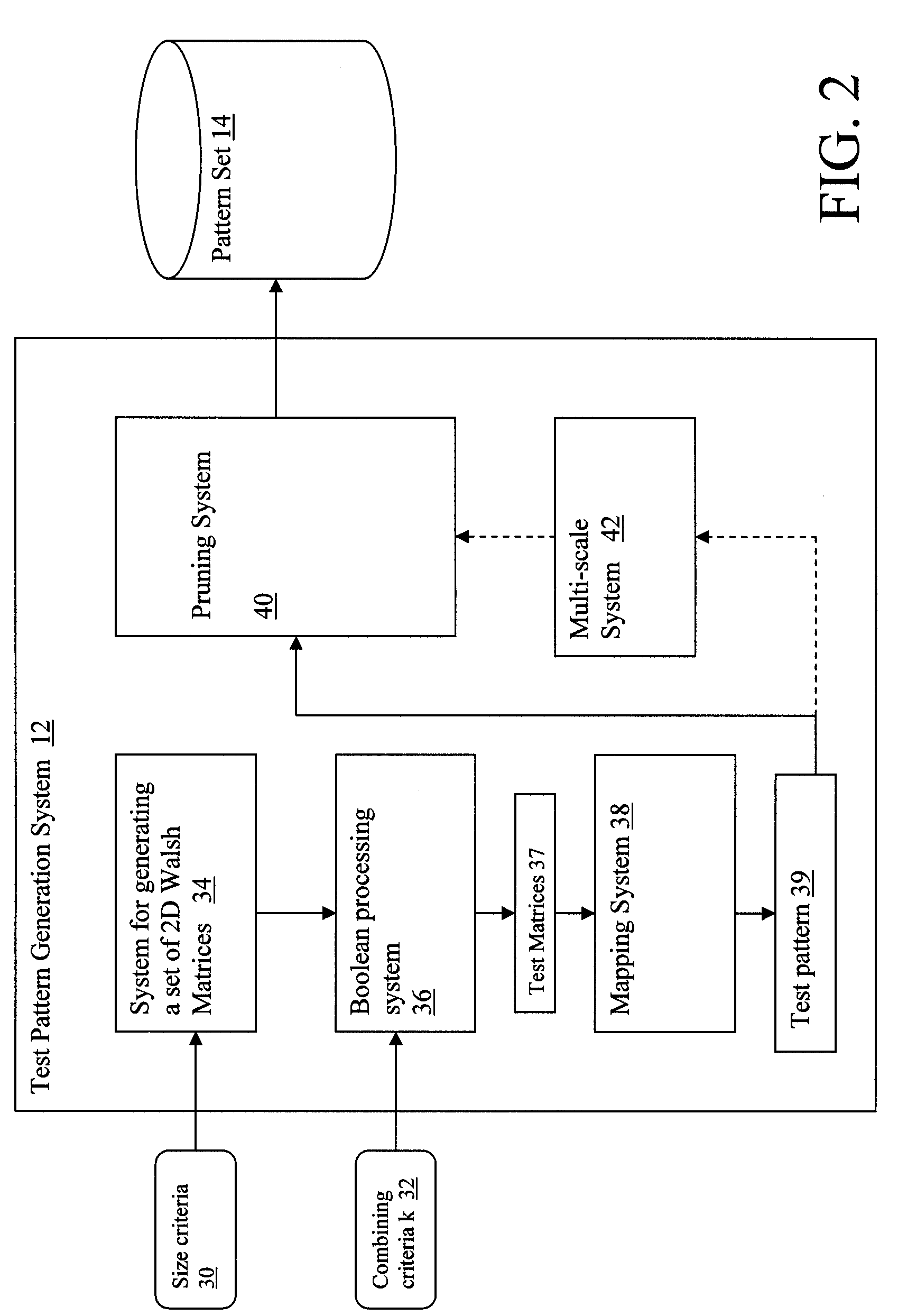Method for generating a set of test patterns for an optical proximity correction algorithm
a technology of optical proximity correction and pattern generation, applied in the field of vlsi design, can solve the problems of failure or production of layouts faulty for inputted patterns, deviation of normal patterns produced on the wafer, and inability to accurately cover the layou
- Summary
- Abstract
- Description
- Claims
- Application Information
AI Technical Summary
Benefits of technology
Problems solved by technology
Method used
Image
Examples
Embodiment Construction
[0018]Referring now FIG. 1, an illustrative optical proximity correction (OPC) testing system 10 is shown. OPC testing system 10 includes a test pattern generation system 12 that generates a pattern set 14 that will be used to test an OPC algorithm. To accomplish this testing, individual patterns 16 are inputted to an OPC modeling system 18 to generate a modeled output 20. Modeled output 20 describes, e.g., how the inputted pattern 16 would translate onto a wafer using a particular OPC algorithm. A correction analysis system 22 can analyze the modeled output 20 to determine if the OPC algorithm will generate a faulty result for the inputted pattern. Thus, OPC modeling system 18 and correction analysis system 22 form a correction process that verifies topological equivalence, e.g., ensuring that no shorts (reduced number of shapes) or opens (increased number of shapes) are created. It should be understood that the OPC testing system 10 shown in FIG. 1 is provided for illustrative pur...
PUM
 Login to View More
Login to View More Abstract
Description
Claims
Application Information
 Login to View More
Login to View More - R&D
- Intellectual Property
- Life Sciences
- Materials
- Tech Scout
- Unparalleled Data Quality
- Higher Quality Content
- 60% Fewer Hallucinations
Browse by: Latest US Patents, China's latest patents, Technical Efficacy Thesaurus, Application Domain, Technology Topic, Popular Technical Reports.
© 2025 PatSnap. All rights reserved.Legal|Privacy policy|Modern Slavery Act Transparency Statement|Sitemap|About US| Contact US: help@patsnap.com



